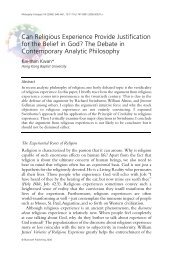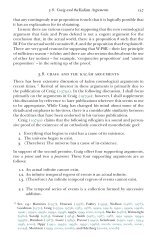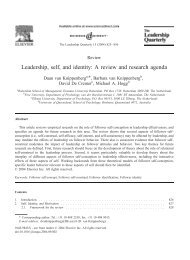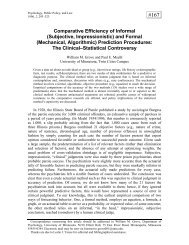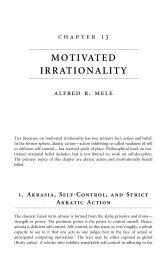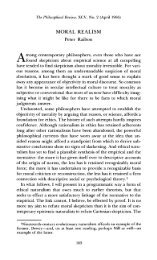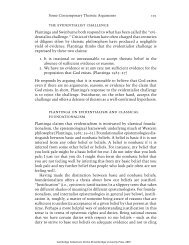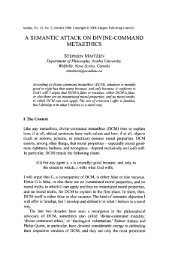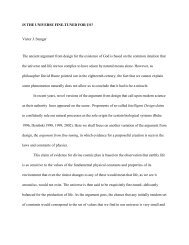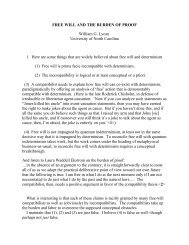Atheism and Theism JJ Haldane - Common Sense Atheism
Atheism and Theism JJ Haldane - Common Sense Atheism
Atheism and Theism JJ Haldane - Common Sense Atheism
Create successful ePaper yourself
Turn your PDF publications into a flip-book with our unique Google optimized e-Paper software.
114 J.J. <strong>Haldane</strong><br />
To bring this out consider a further ambiguity. What is meant by<br />
talking about ‘many universes’? In futuristic fantasies, space travellers often<br />
journey to ‘other worlds’. This way of speaking of far away <strong>and</strong> hitherto<br />
unknown places pre-dates science fiction. The European explorers of the<br />
fifteenth <strong>and</strong> sixteenth centuries sailed from the ‘old’ world <strong>and</strong> discovered<br />
the ‘new’, but in saying so no one intends that they left the planet. Similarly<br />
one might speak of ‘other universes’ meaning far distant <strong>and</strong> currently<br />
unobservable regions of the Universe – the one spatio-temporal-causal<br />
continuum. Alternatively one might mean, though this is much harder to<br />
make sense of, entirely distinct cosmic set-ups, wholly discontinuous with<br />
the Universe we inhabit.<br />
If the hypothesis of plural universes invokes the former idea then it is clear<br />
enough what is being said, but it should also be evident that it fails to serve<br />
the purpose intended. Any evidence we could have for the existence of<br />
spatially or temporally distant regions <strong>and</strong> systems would necessarily be evidence<br />
for situations generally like those obtaining in our sector – that is to say<br />
situations exhibiting the same finely tuned features whose existence seemed<br />
to call for explanation. This is so because all that could lead us to postulate<br />
<strong>and</strong> predict the character of distant universes would be the application<br />
of observational-cum-inferential methods to empirical-cum-theoretical data<br />
available to us here. So if ‘many universes’ means ‘many local set-ups’ within<br />
the Universe the hypothesis fails to defuse the power of the new design<br />
argument. If on the other h<strong>and</strong> it is being claimed that there could be many<br />
Universes – entirely distinct realities, wholly discontinuous <strong>and</strong> sharing no<br />
common elements – then, while it is uncertain how to interpret this, it is clear<br />
that there could be no empirical evidence in support of the hypothesis, <strong>and</strong><br />
nor could it be derived as a necessary condition of the possible existence<br />
<strong>and</strong> character of the only universe of which we have or could have scientific<br />
knowledge. In short the hypothesis appears as entirely ad hoc, introduced only<br />
to avoid what for the naturalist is an unpalatable conclusion, viz., that the<br />
general regularities <strong>and</strong> particular fine tuning are due to the agency of a<br />
designer – et hoc dicimus Deum.<br />
Some readers will be struck by the parallels between the many universes<br />
hypothesis <strong>and</strong> another theoretical construction, namely the so-called ‘Many-<br />
Worlds Interpretation’ of quantum mechanics. This is a response to a deeply<br />
puzzling feature of a major part of fundamental physics. In a quantummechanical<br />
situation it seems that there are indeterministic transitions<br />
between states. The theory tells us that a system will go from A to either B or<br />
C, but in principle it cannot tell us which one it will go to – the outcome is<br />
indeterminate. Among those who find this situation unacceptable some maintain<br />
that the uncertainty is only epistemological. There is a fact of the matter<br />
involving ‘hidden variables’ but for one reason or another we do not, or



